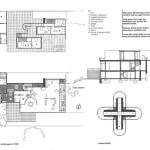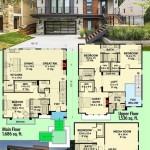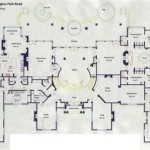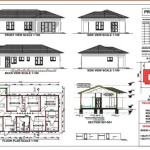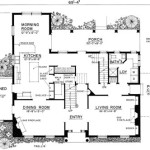Essential Aspects of House Remodel Plans
Remodeling a house is a significant project that requires careful planning and execution. A well-defined remodel plan serves as a roadmap for the project, ensuring that every aspect is considered and executed smoothly. Here are essential elements of house remodel plans that homeowners should familiarize themselves with:
1. Scope of Work
Clearly define the extent of the remodel. This includes specifying which areas of the house will be renovated, the type of work to be done (e.g., kitchen remodel, bathroom upgrade), and any structural changes or additions involved. A detailed scope of work provides a solid foundation for subsequent planning.
2. Floor Plans
Floor plans are essential for visualizing the new layout of the remodeled space. They should accurately depict the dimensions, room arrangements, and placement of fixtures, appliances, and cabinetry. Floor plans help homeowners envision the functionality and flow of the renovated space.
3. Elevations and Sections
Elevations and sections provide vertical and horizontal views of the remodeled structure. They illustrate the height, shape, and architectural details of the building and its components. These drawings are crucial for ensuring the structural integrity and aesthetic appeal of the remodel.
4. Material Specifications
Specify the materials to be used for flooring, walls, countertops, cabinetry, fixtures, and other elements. This includes detailing the type, color, texture, and finish of each material. Material specifications ensure that the remodel adheres to the desired design aesthetic and meets functional requirements.
5. Electrical and Plumbing Plans
Electrical and plumbing plans are essential for ensuring the safety and functionality of the remodeled space. They indicate the location of electrical outlets, switches, piping, and fixtures. Proper planning and coordination with contractors are necessary to avoid costly mistakes or safety hazards.
6. Lighting Plan
A lighting plan outlines the placement and type of lighting fixtures throughout the remodeled area. It considers natural light, task lighting, and ambient lighting to create a balanced and visually appealing environment. A well-thought-out lighting plan enhances the functionality and ambiance of the space.
7. Budget and Schedule
A detailed budget outlines the estimated costs for materials, labor, and other expenses associated with the remodel. This includes contingency funds for unexpected costs. A realistic schedule sets milestones and timelines for the project, ensuring that work progresses efficiently and within the desired timeframe.
8. Contractor Selection
Selecting reputable and experienced contractors is essential for the success of the remodel. Evaluate potential contractors based on their qualifications, references, and reputation. A well-established relationship with the contractor ensures clear communication, timely execution, and high-quality workmanship.
9. Obtaining Permits
Depending on the scope of the remodel, building permits may be required. These permits verify that the project complies with local building codes and zoning regulations. Homeowners should research the necessary permits and initiate the application process well in advance.
10. Inspections and Sign-offs
Throughout the remodel, regular inspections are necessary to ensure that work is completed according to plans and meets building code requirements. Sign-offs document the completion of each phase of the project and authorize the release of funds to the contractor.
By carefully considering these essential aspects, homeowners can develop a comprehensive remodel plan that addresses all critical elements of their project. A well-defined plan not only enhances the success of the remodel but also provides a clear framework for communication, decision-making, and project management.

5 Stages Of Remodeling The House Designers

Easy Home Remodeling Design Plans

Home Remodeling Plans

Easy Home Remodeling Design Plans

Case Study How To Fix A Bad Ranch Floor Plan Midmod Midwest

Old House Remodeling Design Ideas Part One Two Bedroom Home Converted To Open Floor Plan

Home Remodeling Renovation Ideas Architectural Digest

10 Interior Remodeling Design Ideas For Small Spaces

How To Plan A Home Renovation In 8 Steps Budget Dumpster

Create A Home Remodeling Plan In 10 Simple Steps Hometown Demolition

